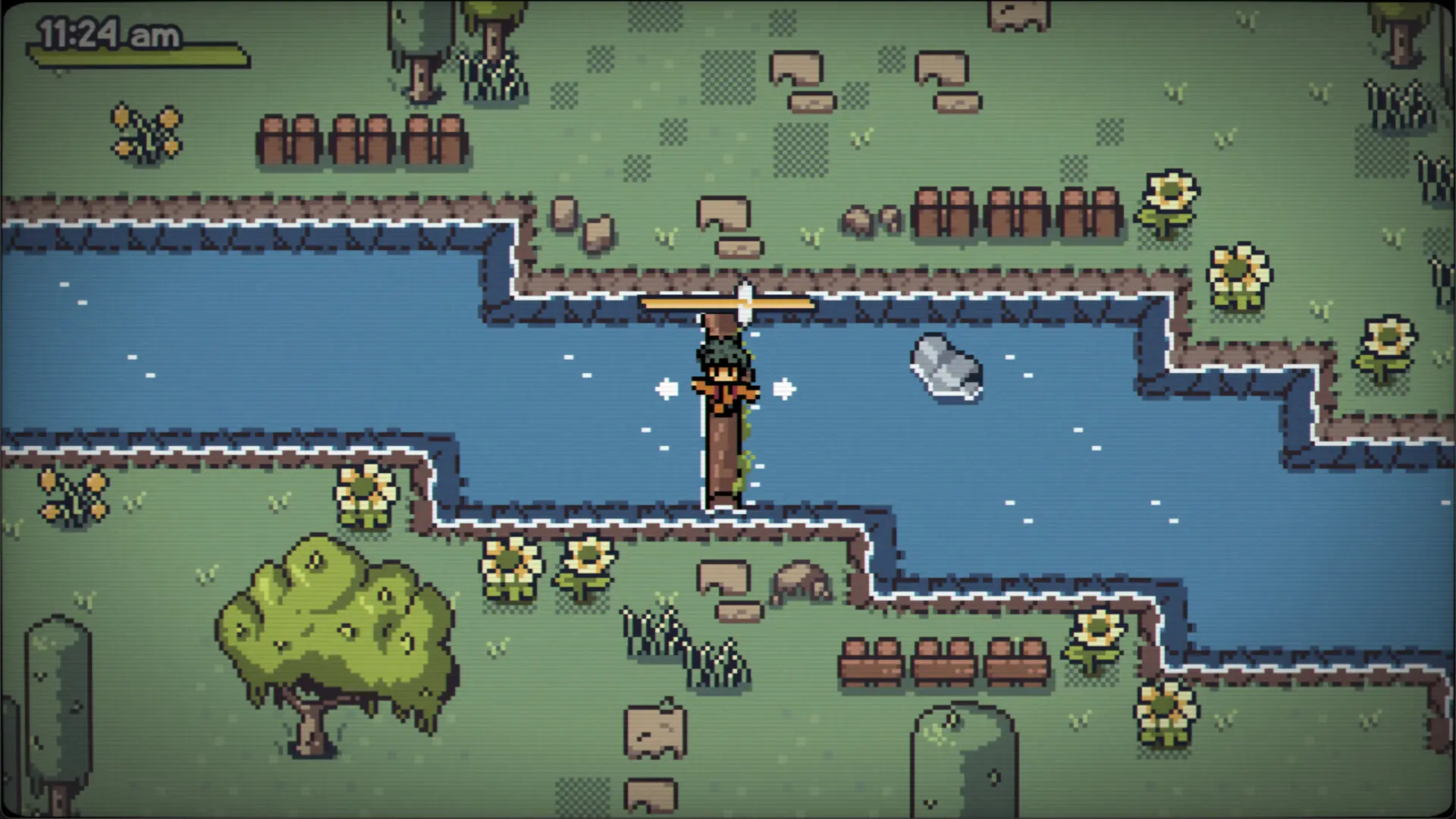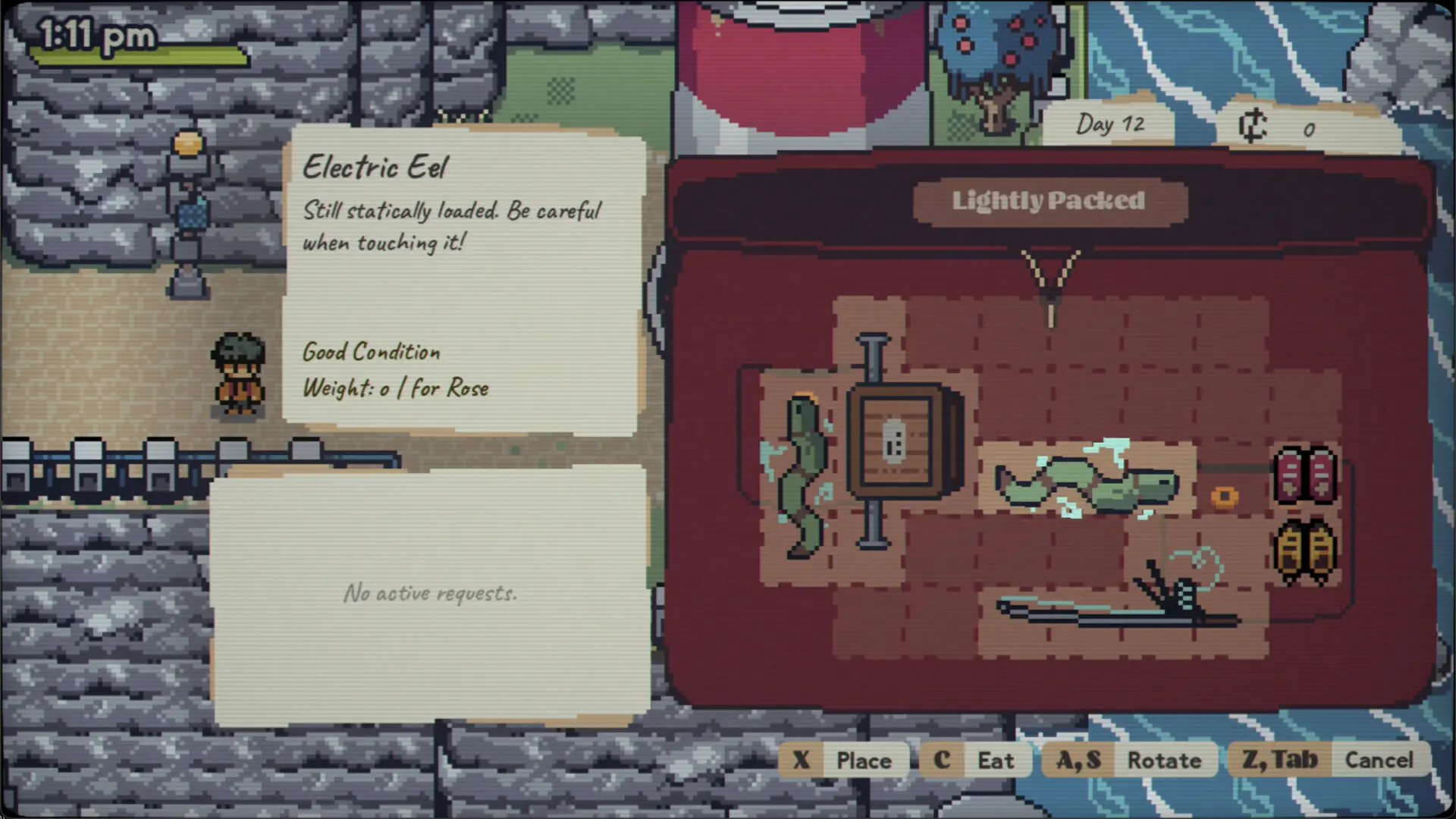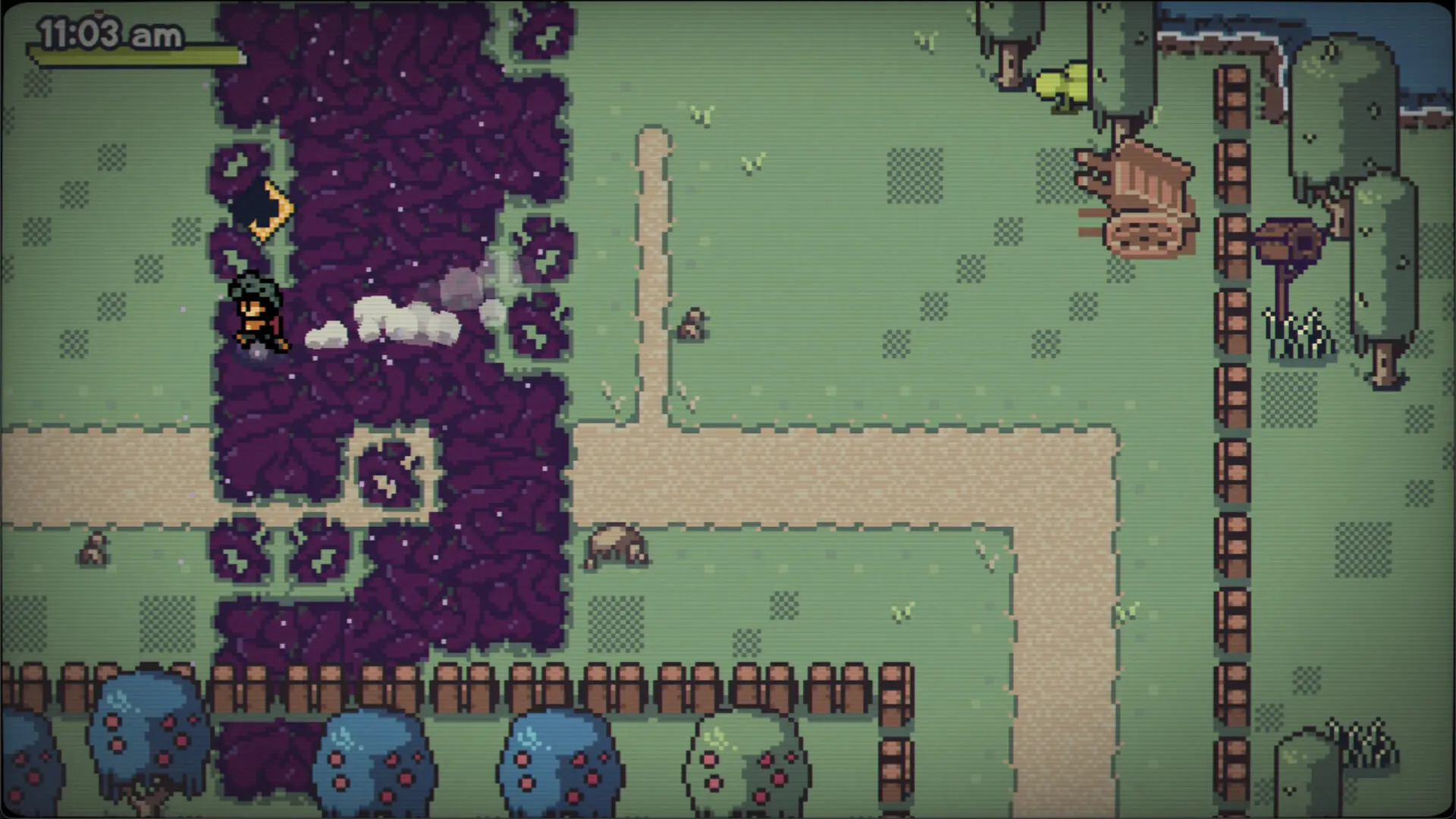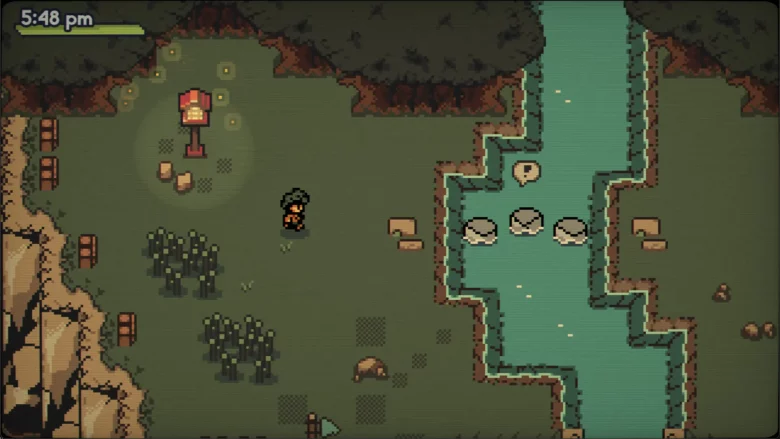There’s something satisfying about delivery games. From meticulously planning your route and equipment in Death Stranding 2, to driving around Providence Oaks and dropping off mail to the locals in Lake, there’s just something satisfying about bringing people stuff. Fading Serenades is the latest entry in this somewhat niche genre, and one that brings some new ideas that unfortunately didn’t land for me.
While the opening of the game is a little slow, I liked the way it doled out lore about the world. You play as Callum, arriving on Clifford’s Island alongside his little AI-in-a-box companion Par. Par’s existence alone hints at a futuristic world, and the game slowly builds on that in its opening hour, introducing you to a small cast of elderly individuals who have made the island their home. There are nods to an authoritarian regime on the mainland that they’ve tried to escape, but the main thrust of the narrative is the mystery surrounding the radio tower and a scientist that disappeared. It’s intriguing stuff, but it wasn’t quite enough to balance out the mechanical shortfallings for me.

Callum’s the new delivery boy, and while some people are a bit wary of a young’un on the island, he’s quick to get stuck in as their friendly courier. Considering there are less than a dozen people living here it’s unbelievable how often they need to move things between them, and it makes you wonder how they survived before Callum arrived as they’re spread out all over the place.
Deliveries are a simple case of inventory management and then traversing the island to reach your destination. There’s a Resident Evil 4 style inventory system, which we all know is the most fun inventory system ever invented, and slotting things into your backpack in Fading Serenades ensures that the start of each delivery is fun. The game does some smart things when it comes to the time and energy systems too. There are no enemies in the game and so there’s very little jeopardy, but the developer has injected a bit of resource management into the proceedings in the form of time and energy to keep you engaged.
Each area is made up of multiple screens, but moving from area to area will cause time to progress, so the more you explore, the more time passes. Similarly, your energy doesn’t trickle down simply by moving around, but you’ll need to bypass obstacles to get around the island, such as stepping stones, walking across fallen logs or even rock climbing. All of these drain your stamina, so you need to think about how far you intend to travel each day and make sure you’re equipped accordingly with energy bars. They’re smart systems and something I’d like to see more often in my beloved farming games.

That said, they don’t do quite enough to break up the monotony of the game for me. Deliveries are essentially fetch quests. You pick up an item from someone and take it to someone else, with the only variety provided by the terrain, and that quickly gets old too. Hopping across stepping stones is a fun idea at first, but when you’ve had to do it two dozen times over the course of a few in-game days as you’re delivering things to and from people, the appeal quickly wears off. At one point I needed a set of running shoes to bypass a specific obstacle, and grinding out deliveries to earn the coins was a drag. I’d run out of main deliveries to do and was left picking up secondary objectives, which usually involves finding 3-5 items and delivering them to a specific character. They’re not particularly fun, and when you finish them they simply reset. It took me several in-game days to collect all of Copper’s lost records, only for him to lose them all again two days later, restarting the objective. It just left me feeling a bit hollow, like the game was essentially just full of busywork.
Also, rather annoyingly, there’s no in-game map. Well, that’s not strictly true. There’s a map on the post office wall, showing you the layout of the island and the residents, plus who has a delivery request for you. It’s handy as Clifford’s Island is a hodgepodge of interconnected areas with multiple ways in and out of each. It’s easy to forget which way you need to go to get to a specific residence, so a map would be really handy. Unfortunately you don’t get a map to take with you though, and even more frustratingly, Copper, your boss, openly pokes fun at this. In the end I just took a photo of it on my phone to refer to, which shouldn’t really be something I needed to do.

It doesn’t help that some areas of the map look quite similar, with routes in and out of them that lead to different locations, and winding paths through forests and up cliffs. This, along with the regular reusing of terrain obstacles just left me feeling quite bored as I explored Clifford’s Island. It’s a cute game, and while the visuals helped keep me interested in some places, the majority of the time I was less than enthused with the sights and sounds of the island. The island just didn’t make me feel much, which is vital in a delivery game. You spend so much time wandering in the environment in these games that you should connect with it as much as you do the characters. When I think of Death Stranding 2 or Lake, I think about those worlds that I feel immersed in, which just wasn’t the case with Fading Serenades and made it difficult to absorb myself in the mystery of the story or the carefully crafted world that’s been created.
It’s by no means a terrible game, and I think some people will immediately be grabbed by the hook and happily trek across the island to uncover the mysteries on offer. For me though, the repetitive gameplay and constant back and forth across the map made me want to return Fading Serenades to sender.
